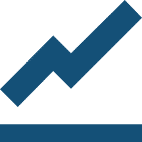00:00:04:06 – 00:01:17:07
Welcome to Shorr Solutions: The Podcast. I’m your host, Jay Shorr. I’m the CEO and founder of Shorr Solutions, a national and award-winning consulting firm, assisting aesthetic and surgical practices with their operational, administrative and financial success. I have an amazing team of practice management experts and clients across the U.S. and as an industry expert with firsthand experience owning a multi-million-dollar cosmetic dermatology and plastic surgery practice.
Listen in as I lend you my expertise and best tips to successfully manage and grow your aesthetic practice. I will also be bringing in guests along the way, so get ready to be equipped to operate your aesthetic practice strategically and profitably. Welcome to Shorr Solutions: The Podcast.
Hello and welcome to another episode of Shorr Solutions:the podcast. I’m your host, Jay Shorr. I am the founder and CEO of Shorr Solutions, an international practice management consulting firm. Specializing in the operational, administrative, financial, health and guidance of your aesthetic, cosmetic and surgical practice.
00:01:17:08 – 00:01:52:07
Today’s session is going to review how and when to properly review your P&L statement. But before we begin, let’s define what a P&L statement is. Many times I hear people refer to it and write as P the letter N and the letter L (PNL), but it’s not.
It’s P stands for profit. The ampersand sign (&) and the L would stands for loss. Profit and loss (P&L).
00:01:52:07 – 00:02:56:09
So the number one question is when is it time to review your profit and loss statement? Well, that’s not really a tricky question, because it really is always, you should constantly be reviewing your profit loss statement because you want to know, are you making profit or are you losing money?
But for the sake of business purposes, when is it time to renew? When I work with our clients and our consulting firm. I try to do it monthly, but at the worst case scenario, quarterly. Why? Because I want to define trends, and trends are what happens in the event that you’re losing money. What happens in the event your expenses go up substantially?
Well, you have to know what they are, and if you don’t know the percentage of your expenses to your total revenues, then how will you know if there’s a disparity in those individual chart of accounts line items?
00:02:56:10 – 00:04:36:14
So what determines what goes into the P&L? It’s very interesting because what goes into it really are all your revenue items and all your expense items.
And people say Jay, well, what determines what goes into that? Everything that you generate as far as revenue goes into the sales and the profit side or revenue side, because we’ll talk about what profit really is and then anything that costs you money or that you spend money on goes on to the expense side. That’s what’s considered assets and liabilities, profits and losses.
So what goes into it? all the revenue you generate goes into the revenue side and all the expenses that you incur go into the revenue side, which will determine your profit and loss. Because the true definitions of profit are gross revenue minus your cost of goods sold equals gross profit. That’s not what you take to the bank. And then you have fixed and variable expenses and we’ll get into that in a little bit.
And that after you take all of your expenses and you subtract that from all of your revenue, will give you your net profit. Now you can have a positive gross profit with a negative net profit. And people say, Well, what’s my margin? Profit is based on dollars, margin is based on percentages.
00:04:36:15 – 00:07:55:14
So who should review the P&L? Well, I guess a better question is who should create the P&L? Well, if you’re much too busy, if you’re a business owner to be creating the P&L, so usually you’ll have accountants, bookkeepers, accounting firms, and they do it. And then you should review. Where do they get that information? If they have access to your chart of accounts, your bank accounts, they’ll take that from your bank accounts.
If your expenses directly go into your QuickBooks, for example, it will go in as a line item. Now, let’s define what are line items. In your P&L, in your chart of accounts from QuickBooks, a chart of account is what the category is. So you may have medical supplies, medical expenses, rent, utilities, and if you want to sub categorize to be even more finite, you can. Example, What are my utilities?
Utilities are your phone, your electric, the gas, not gasoline, but natural gas that you may use for heat. Plumbing. The water. They are utilities. Insurance. What’s insurance? Insurance is your general liability. It could be your professional liability. Malpractice. It could be your cyber coverage. It could be your EPLI (Employment Practices Liability Insurance) coverage, can be all of them. But what the grand total is, is really insurance.
sub categorized by the individual items that I just said that will be grouped into the grand totals. And this way, if you really want to get finite like I do, I like to look at all my sub chart of accounts because I want to see where I’m spending my money and can I save money? Because understand something, if you’re running it at 20, 25, 30 percent margin, remember margin is based on percentages.
Well, one of the interesting things are that every revenue dollar let’s just say it’s 33% margin. Every revenue dollar, you may only have $0.33 worth of profit, but every dollar of an expense that I reduce is a 100% margin or profit dollar. So who should review it? You should always end up reviewing it. Our previous slide said When, I say minimum quarterly, I like to do it monthly with our clients.
If you don’t have the time, then do that with your accountant. Review it with your bookkeeper because you want to make sure that the categories of the expenses don’t have a lot of disparity from the prior months. For example, your rent should always be the same every month unless the rent goes up, unless you didn’t pay it in one month and you doubled up on the next.
Or in the event you paid rent on the 1st of the month for that month, but paid it on the 30th, a month for the next month, you’re going to show a double payment in one month and none for the next. So we just want to make sure that it all levels out, that our expenses, whether we pay on the cash or accrual method, we’ll get into that in a little bit, all match so that we’re able to detail are we off or are we too high or are we too low?
00:07:57:05 – 00:09:38:18
Yes. We’re going to take a quick break and a slight intermission, because what kind of business would we be if we didn’t tell you about our own services? I’d like to take a moment to tell you about our conversion cascade online course. We want you to be trained to convert more patients and boost revenue in your aesthetic practice.
So with our conversion cascade online course, you and your team will be able to master two key important things to growing your practice and becoming successful, converting and retaining new patients. So as a step by step sales funnel, the course is designed to help you and your team attract more patients, convert calls to consults, convert consults to treatments and procedures, and keep patients coming back for more.
Not only will our conversion cascade Online course help strengthen and develop your team’s phone and sales skills in order to acquire, convert and retain loyal patients, but will also serve as a valuable onboarding training tool for every new team member. Plus, in this course you’ll receive downloadable marketing checklists, phone scripts, conversion tracking tools and more. Sign up for the course to get started on increasing your revenue and converting more patients.
Today, it only takes less than 4 hours to complete the course. You can finish it at your own pace and you’ll have lifetime access. And as a special thank you for our podcast listeners. We’re giving you a 20% off discount. Just enter the code PODCAST to start saving. Click the link in our show notes to sign up for the conversion Cascade Online course and convert more patients now.
00:09:39:24 – 00:10:46:05
So what should you look for in your P&L? I always say what should be looked for is disparities. GROSS increases. GROSS decreases because we want to say if there’s an increase, was it miscategorized? Always look at your P&L, because in the event one day you want to sell your business, you want to know that because the buyer is going to ask while your expenses are too high in certain things, what should your highest expense be?
Probably payroll. And if you pay yourself a high rate of payroll, it’s definitely going to be. So what should you look for? You look for highs and lows and you don’t want it to be like a parabola. This is a parabola that goes up and down and up and down. You want to make sure that the percentage to revenue, each expense item should be within a certain percentage of revenue.
And when you look at the month over month, if there’s disparity, you want to know why,
00:10:46:06 – 00:11:50:17
So should I be on a cash or should I be on an accrual method? Being on a cash or accrual method is basically up to your accountant. What’s the difference? Well, a cash method is what I spend and what I paid at the time that I pay it.
So if I pay the expense, it’s a cash. Then, you know, if I’m collecting the money, it’s the cash, credit card, whatever. When I receive it is when I’m categorizing it is when I’m counting on it. The same thing with expenses, but if I have a $24,000 professional liability insurance bill and I pay it in the month of April or May, then I took the cash method and I took that and I expense it all in one month.
But it’s going to be an unreasonable expense in one month where if I took it and I paid it a month but my accountant took it as $2,000 a month, I’m going to accrue that expense month over month. It’s good for general, good accounting.
00:11:50:17 – 00:12:51:21
So what are fixed and what are variable expenses? You know, you can always say I mentioned fixed and variable expenses earlier because that’s what’s below the line, meaning gross revenue minus cost of goods sold equals gross profit.
Then below that line are my fixed and variable expenses. So what’s a fixed expense? A fixed expense. It’s considered like my rent. My rent might be $5,000 every month for that year. It’s fixed. There’s not a whole lot I can do about it. My insurance premiums have nothing changes. My payroll is kind of fixed. If I have certain expenses, you know, then I have to count on that.
But some of my supplies and some of my equipment that I may buy month over month and year over year that vary. That’s a variable expense. And I want to know that because if I see disparities in my P&L, I want to know why.
00:12:53:21 – 00:14:13:18
So what is more important, revenue or expenses? Well, I think I explained to you revenue, every dollar that you bring in, you’re only going to make X amount of percent of profit.
But expenses for every dollar that you can reduce is going to be 100% profit. So how do I reduce my expenses? Well, you have to figure what are you spending the most on? Your fixed expenses are very difficult, if not impossible, to reduce. If you buy a piece of equipment and it is $1,000 every month, $2,000 every month for the next six months, that’s a fixed expense.
So supplies you may cut down on some of your supplies. You may try to reduce some of your contracts that you have biomedical, hazardous waste and your credit card processing, and your bank and your interest charges. Renegotiate, renegotiate and renegotiate some more. What’s more important? I love revenue, but if it cost you more money to generate more revenue, if you’re not making more profit, then what was the benefit of additional revenue?
00:14:13:18 – 00:16:22:20
All right. Our next question is what is a chart of accounts, when I shared with you on your P&L, You have your revenue. One of the things you want to know is where is my revenue coming from? And most people just categorize it as sales or gross revenue. I, on the other hand, love to know where that revenue came from.
What are my sources of revenue? Neuromodulators, Neurotoxins, dermal fillers, laser sales. What was the type of laser? Was it hair removal? Was it for vascular? Was it on some of my cryolipolysis machines? Where did the revenue come from? Very important to know because you’re able to see trends and highs and lows.
On your expense side, I mentioned chart of accounts. You have payroll, you have insurance, you have medical supplies, you have medical equipment, you have office supplies, you have office equipment. And you can always go down and sub categorize. For example, in my former practice, I had medical supplies. We were a dermatology, facial body, plastics, cosmetic, plastic, gynecology and a medspa. So medical supplies was medical supplies: medical for the derm side, medical supplies: cosmetic and medical supplies: surgical.
Now, in each one of those subcategories of medical supplies, cosmetic, I might do medical supplies cosmetic: neuromodulators. Medical supplies cosmetic: dermal fillers. And I’m intentionally not mentioning the names of the vendors because I don’t want to have any conflicts of interest. I have nothing to disclose. However, I’m categorizing that. And then at the end of the day, example insurance under insurances, you can have many different categorized health insurance, professional liability insurance, general liability insurance, EPLI, and you can have cyber.
It will all roll up under the category of insurance. But I want to know what I’m spending on each inclusive like worker’s compensation as well.
00:16:23:17 – 00:17:51:13
So how do I set up my chart of accounts? Well, if you use QuickBooks, for example, it will give you the idea, the opportunity, it has the general ones. But then I used to have subcategories and categories that I wanted to create myself.
You can number them if you choose or just have it named. And this way you can work with your accountant to do that. And it’s very interesting because what I do is in each chart of account, I create it and I like to export it into an Excel spreadsheet so that I’m able to determine what is each percentage of each one of my expense is to my total revenue.
And I look for trends each and every month to see if I’m too high in my expenses. Once I’ve reviewed my P&L, what do I do next? I review it. I review it again. I review it again. I get together with my management staff. I get together with my accountant. I determine what changes can I make to increase my revenue, decrease my expenses, to increase my profitability.
Ladies and gentlemen, thank you for being a part of my podcast today. If you have any questions, please feel free to schedule a free consult that we can help you. Thank you. Good luck and God bless.
00:17:51:14 – 00:19:25:03
So that wraps up today’s episode of Shorr Solutions: The podcast. If we mentioned any website links, you can find them in our show notes to work directly me and our award winning team of consultants to increase efficiency, increase revenue and decrease costs, and your aesthetic practice.
Schedule a free consult with us today. We will help you establish and refine your aesthetic practice’s protocols for maximum efficiency and productivity, decrease your expenses and increase your profitability with an expert financial analysis of your business. Attract more patients, convert calls to consults, convert consults to treatments and keep patients coming back for more. With our sales training, coaching and complimentary access to our conversion cascade online course. Recruit, hire and train new team members and manage any staff turnover with our human resource expertise plus more, head over to our show notes and click on the link to Schedule a free 30-minute consult with us today.
And if you enjoyed today’s episode, don’t forget to spread the word and share this episode with your friends, colleagues and the rest of your team. Remember to also follow us on social media @ShorrSolutions and sign up for our e-newsletter. You’ll learn about our latest tips, blog posts, services, videos, webinars and more.
Links to our social media channels.
And to sign up for our e-newsletter are in our show notes. So see you next time and remember to leave us a review and subscribe or more valuable content.










